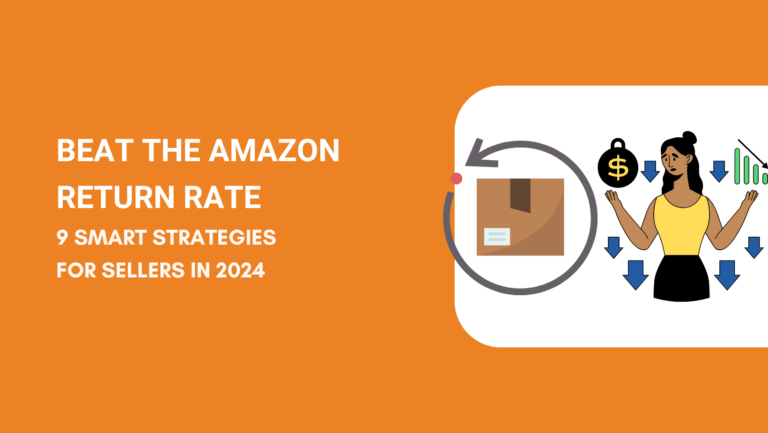Amazon’s return policy is both a blessing and a curse for sellers. While it builds customer trust, it can significantly impact profitability.
The average return rate for online purchases has seen an increasing trend over the past few years. This increase poses challenges for businesses operating on Amazon’s platform.
While it hurts whenever your customer returns a product, you need to lower your return rate to keep your Amazon business up and running.
In this article, you will learn everything about Amazon return rate, its impact on your business, and some proven strategies to lower it. At the end of this article, you will be in a better position to deal with your product returns efficiently.
Let’s start.
Key Takeaways
- Amazon’s return rate for online purchases averages 5-15%, varying by product category and posing challenges for some sellers.
- Excessive returns can lead to account warnings or bans.
- Improving product listings, quality control, and customer support can help reduce returns.
What Is Amazon Return Rate?
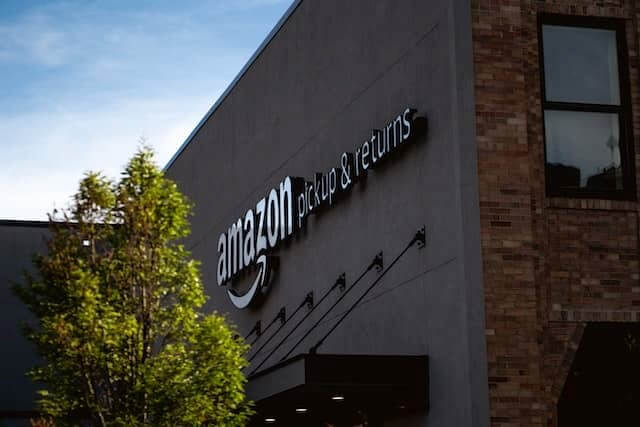
Amazon return rate is the percentage of products customers send back after purchasing. It’s calculated by dividing the number of returned items by the total number of items sold.
For example, if you sell 100 products and 10 are returned, your return rate is 10%.
Understanding your return rate is crucial for your e-commerce success on Amazon. It affects your:
- Profit margins
- Customer satisfaction
- Account health
- Search rankings
Amazon closely monitors return rates. They may send return warnings if your rate exceeds their acceptable threshold.
Some product categories naturally have higher return rates. Electronics and clothing often see more returns than books or household items.
How Can Amazon Return Rate Affect Your Business?
A high Amazon return rate can significantly impact various aspects of your business, from financial performance to customer perception. Understanding these effects is crucial for maintaining a successful Amazon seller account.
Lost Sales

A high return rate directly translates to lost sales. When customers return products, you not only lose the initial sale but also potential future sales. Refunds mean less revenue in your pocket.
For example, if you have a 10% return rate on 1000 units sold, that’s 100 lost sales.
Also, when items are returned, they may not be immediately available for resale. This can result in missed opportunities to sell to other customers, further impacting your bottom line.
Reduced Profits
Processing returns is costly. You incur expenses for shipping, handling, and restocking. These costs eat into your profit margins. If you’re using Fulfillment by Amazon (FBA), you’ll also face FBA fees for returned items.
Consider this: If your product costs $20 and has a 20% profit margin, a single return could wipe out the profit from five sales.
High return rates can quickly erode your profitability, making it challenging to sustain your business in the long run.
Diverts Focus and Planning
Dealing with a high volume of returns can be time-consuming and distracting. Instead of focusing on growth strategies and product development, you may find yourself constantly managing return requests and customer issues.
This shift in focus can hinder your ability to plan for the future and implement strategies to expand your business. You might miss out on opportunities to launch new products or enter new markets because you’re bogged down by return-related tasks.
Lost Chances for Amazon’s Badges
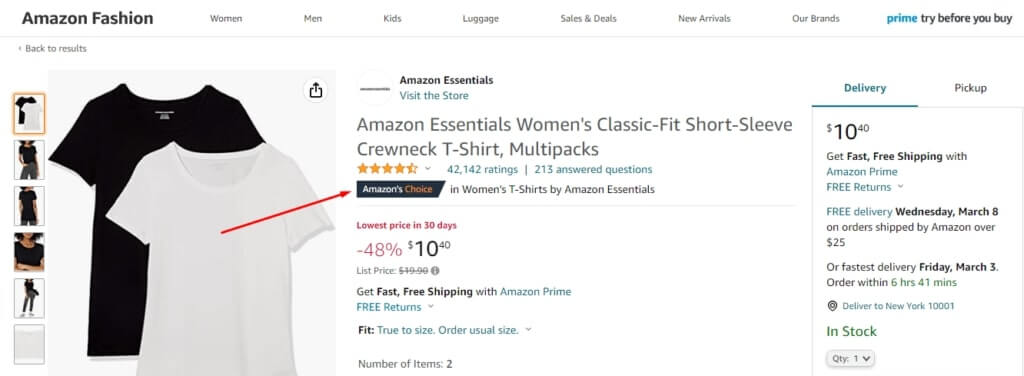
Amazon’s badges, such as “Amazon’s Choice” or “Best Seller,” can significantly boost your product visibility and sales. However, a high return rate can prevent you from earning these coveted badges.
Amazon considers various factors when awarding badges, including customer satisfaction and product quality.
A high return rate suggests that customers are dissatisfied, reducing your chances of receiving these prestigious designations.
Bad Customer Reviews
Returns often correlate with negative customer experiences. Dissatisfied customers are more likely to leave negative reviews, which can severely impact your product’s rating and visibility on Amazon.
A single one-star review can dramatically lower your overall rating. For instance, if you have ten 5-star reviews and receive one 1-star review, your average rating drops to 4.6 stars. This decrease can deter potential buyers and harm your sales performance.
More Customer Services

High return rates often lead to increased customer service demands. You’ll need to handle more inquiries, process more refunds, and manage more complaints. This increased workload may require hiring additional staff or outsourcing customer service.
Each return request typically involves multiple interactions with the customer, from initial contact to refund confirmation. This time-consuming process can strain your resources and impact overall customer satisfaction.
Seller’s Rating
Your seller rating is crucial for success on Amazon. A high return rate negatively affects this rating. Amazon closely monitors return rates as part of their seller performance metrics.
If your return rate exceeds Amazon’s acceptable threshold, you risk account suspension or even termination. Maintaining a low return rate is essential for preserving your seller status and continuing to operate on the platform.
Less Visibility in Buy Box
A high return rate can negatively impact your chances of winning the Buy Box. The Buy Box is crucial for driving sales on Amazon, as it’s the default purchasing option for customers.
Amazon’s algorithm considers various factors when determining Buy Box eligibility, including return rate. A high return rate suggests poor product quality or inaccurate listings, reducing your likelihood of securing this prime selling position.
Restocking or Unplanned Inventory
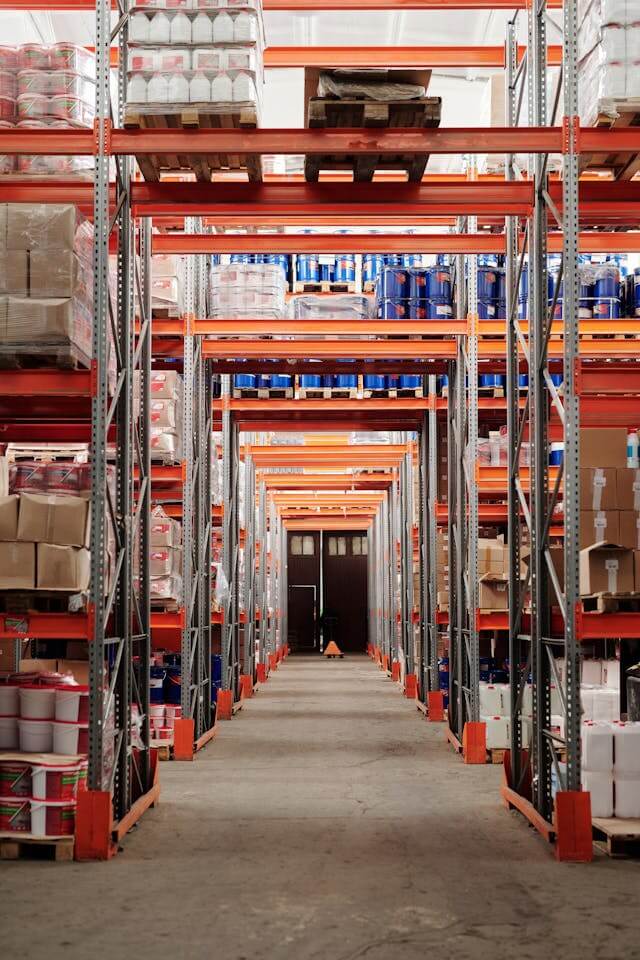
Returns create inventory management challenges. You’ll need to inspect, repackage, and restock returned items. This process requires additional labor and storage space, increasing your operational costs.
Unplanned inventory can also disrupt your supply chain. You might end up with excess stock of certain items, tying up capital that could be used for other business purposes.
Damaged Products

Not all returned products can be resold as new. Some may be damaged during shipping or by customers. These items often need to be sold at a discount or written off entirely, resulting in financial losses.
Even minor damage can significantly reduce an item’s value. For example, a small scratch on an electronic device might force you to sell it as “used” at a 30-50% discount.
Dead Stock
High return rates can contribute to the accumulation of dead stock – inventory that doesn’t sell. This situation ties up your capital and storage space, preventing you from investing in more profitable products.
Dead stock can be particularly problematic for seasonal items. If you can’t sell returned winter coats before spring arrives, you might be stuck with them until the next winter season.
Lower Competitive Edge
A high return rate can weaken your competitive position on Amazon. Competitors with lower return rates may offer better prices or faster shipping, as they’re not burdened by the costs associated with frequent returns.
Your products may also rank lower in search results due to poor performance metrics, making it harder for customers to find and choose your items over those of your competitors.
How to Check Your Amazon Return Rate?
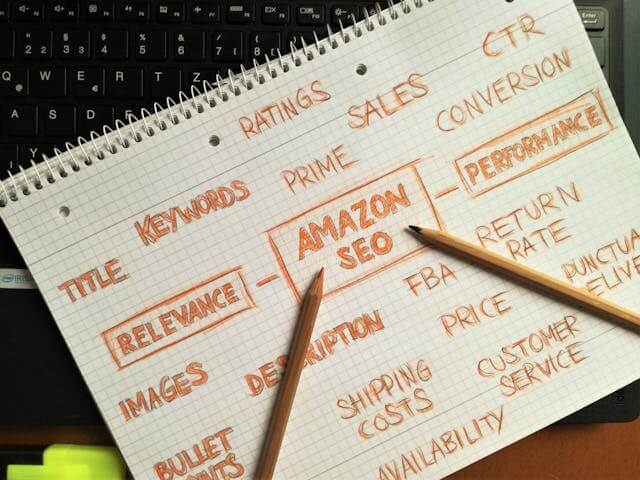
As an Amazon seller, you must have access to the section where you can check your returned products. You can check your Amazon return rate by following these steps.
How to Check Your Overall Amazon Return Rate?
- Log in to your Amazon Seller Central account.
- Click the “Reports” tab.
- Click on “Business Reports.”
- Click on the “Performance” tab. You’ll see the overall return rate of your Amazon shop here.
- You can filter the data by selecting a date range.
How to Check Your FBA Returns Rate?
If you run an Amazon FBA business, you can check your return rate by following these steps.
- Log in to your Amazon Seller Central account.
- Click the “Reports” tab.
- Click on the dropdown menu and select “Fulfillment.”
- Click on “Customer Concessions” and then on “FBA Customer Returns.
You can also “Generate Report” by selecting a desired date range.
How to Calculate Your Amazon Return Rate?
Calculating your Amazon return rate is crucial for monitoring your business performance. The formula is simple:
Amazon Return Rate = (Number of Units Returned / Number of Units Sold) x 100
Let’s break it down with an example:
You sold 500 units last month and received 25 returns. Return Rate = (25 / 500) x 100 = 5%
Amazon provides a Returns Performance dashboard in Seller Central where you can track this metric easily. Check it regularly to spot trends.
Pro tip: Calculate return rates for individual products too. This helps identify which items need improvement.
To get a clearer picture, consider these time frames:
- Weekly
- Monthly
- Quarterly
- Yearly
Remember, the average return rate for Amazon sellers is between 5% and 15%. If yours is higher, it’s time to investigate why.
Common Reasons for Customer Returns
In your investigation, you might stumble upon the following common reasons for customer returns. If you understand and resolve these issues in the first place, you can reduce your returns significantly.
Incorrect Product Description
Misleading product descriptions can significantly impact your Amazon return rates. When customers receive items that don’t match their expectations, they’re more likely to send them back.
For example, imagine you order a “100% cotton” shirt, but it arrives made of polyester blend. You’d probably return it, right? This scenario happens more often than you might think.
Studies show that up to 20% of returns are due to inaccurate product descriptions. That’s a substantial chunk of your potential profits lost to avoidable mistakes.
Variation in Specification
Product specification discrepancies can significantly impact your Amazon return rate. When customers receive items that don’t match the listed specs, they’re likely to send them back.
For example, if you sell a laptop and list it as having 16GB of RAM, but the delivered product only has 8GB, you’re setting yourself up for returns. This mismatch can lead to a return rate increase of up to 15%.
By ensuring your product specifications are spot-on, you’ll build trust with customers and reduce the likelihood of returns due to unmet expectations.
Wrong Product Delivered
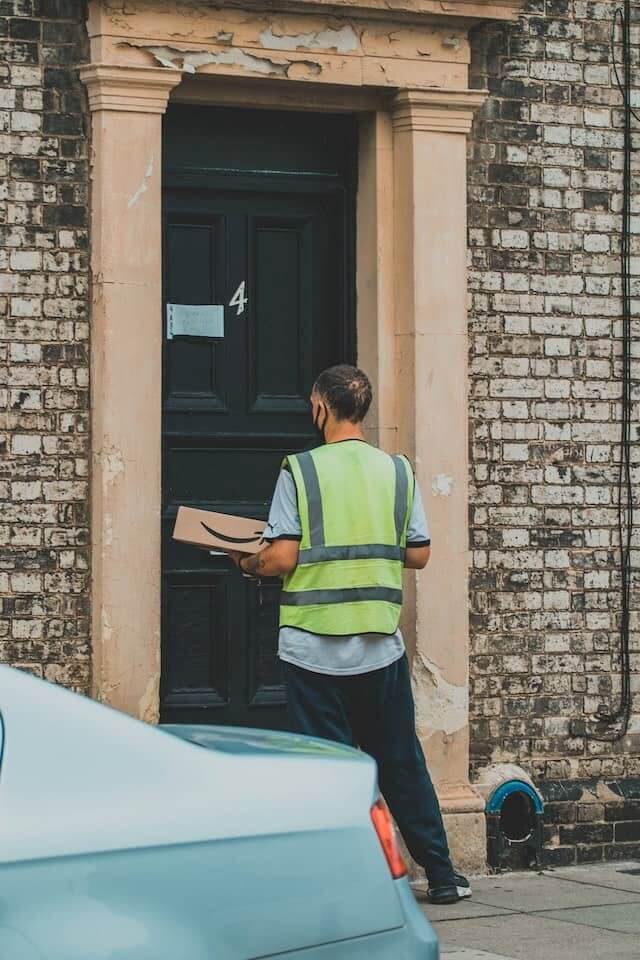
Has Amazon ever sent you the wrong item? It’s frustrating, but you’re not alone. This issue accounts for a significant portion of customer returns.
Imagine ordering a sleek new smartphone, only to receive a toaster instead. Such mix-ups can happen due to warehouse errors or mislabeled products.
Just like you, a customer would likely return the product, too, if they didn’t order it or got a different one.
Defective or Damaged Product
Receiving a defective or damaged product can be frustrating for customers and often leads to returns. Amazon recognizes this issue and has implemented measures to address it.
If you’re an Amazon seller and 10% of your shipped items are reported as defective, you may receive a warning email.
False Promises
False promises in product listings can lead to higher return rates and unhappy customers.
One common issue is inaccurate product descriptions. Sellers might exaggerate features or use misleading photos, leaving buyers disappointed when the item arrives.
For example, a laptop advertised as “lightning-fast” might struggle with basic tasks. Or a “genuine leather” bag turns out to be faux leather. These discrepancies often result in returns.
By setting realistic expectations, you can reduce the likelihood of returns. Remember, happy customers are more likely to leave positive reviews and make repeat purchases.
The Difference in Quality

Product quality plays a crucial role in determining your Amazon return rate. When customers receive items that don’t meet their expectations, they’re more likely to send them back.
High-quality products typically result in fewer returns. These items often have better materials, superior craftsmanship, and longer lifespans. Customers feel satisfied with their purchases and are less inclined to return them.
On the flip side, low-quality products can lead to a higher return rate. Issues like poor construction, faulty components, or quick wear and tear can frustrate buyers. They may feel disappointed and opt to return the item.
Let’s consider a real-world example:
- High-quality headphones: Durable materials, clear sound, comfortable fit
- Low-quality headphones: Cheap plastic, muffled audio, uncomfortable design
The low-quality headphones are more likely to be returned due to customer dissatisfaction.
Remember, investing in quality might cost more upfront, but it can save you money in the long run by reducing returns and building customer loyalty.
Sizing Issues
Sizing problems are a major cause of Amazon returns. When customers receive items that don’t fit, they’re likely to send them back. This can significantly impact your return rate.
You can tackle this issue by providing detailed size information. Include accurate measurements in your product listings. Use size charts that compare your items to standard sizes. This helps shoppers choose the right fit.
Consider adding fit advice to your descriptions. For example, if your shoes run small, mention that customers should order a half size up. This kind of guidance can prevent disappointment and returns.
Photos can also help with sizing. Include images of models wearing your products. List the model’s height and the size they’re wearing. This gives buyers a visual reference for how the item might fit them.
Late Deliveries

Late deliveries can significantly impact your Amazon return rate. When packages arrive later than expected, customers may no longer need the item or lose trust in your reliability.
If a package is delayed, communicate proactively with your customer. Keep them informed about the status and expected arrival date.
Consider offering compensation for significant delays. Amazon often provides:
- Refunds of shipping fees
- Store credit or gift cards
- Full refunds in extreme cases
By addressing late deliveries promptly, you can reduce the likelihood of returns and maintain positive customer relationships.
Change of Mind
Buyer’s remorse is a common reason for Amazon returns. One might purchase an item on impulse, only to regret it later. This feeling can lead to a change of mind and a desire to return the product.
For example, a customer buy a trendy gadget during a flash sale. A few days later, they realize it doesn’t fit their needs as well as they thought. This scenario is typical and contributes to higher return rates.
Bad Customer Support

Poor customer support can significantly impact your Amazon return rate. When buyers encounter issues with their purchases, they often turn to seller support for help.
If your support team fails to address their concerns promptly and effectively, customers may opt to return the product instead.
Response time is crucial. Customers expect quick replies to their queries. Aim to respond within 24 hours to prevent frustration that could lead to returns.
Clear communication is equally important. Avoid technical jargon and provide easy-to-understand solutions. For example, if a customer can’t figure out how to assemble a product, offer step-by-step instructions or a video guide.
Listen to your customers’ concerns and show that you understand their frustration. A simple “I’m sorry you’re experiencing this issue” can make a big difference.
Be proactive in addressing common problems. If you notice a pattern in customer complaints, create a FAQ section or include additional information in your product listings to prevent future issues.
Price Realization
When customers feel they didn’t get value for their money, returns often follow.
Consider this scenario: You price a product at $50, but similar items sell for $30-$40. Buyers might purchase impulsively, then experience buyer’s remorse upon realizing the price discrepancy.
Regularly analyze your pricing strategy’s impact on return rates. Adjust as needed to find the sweet spot between competitive pricing and customer satisfaction.
9 Proven Strategies to Lower Amazon Return Rate
We’ve just discussed the common reasons of Amazon customer returns. Now, let’s implement some actionable strategies to effectively lower Amazon return rate:
1. Enhance Product Listings
Creating compelling product listings is crucial for reducing your Amazon return rate. Optimizing your listings can help potential customers make informed decisions before purchasing.
Start by crafting clear, detailed product descriptions. Include accurate dimensions, materials, and features. This transparency helps set realistic expectations and reduces the likelihood of returns due to misunderstandings.
Use multiple photos that showcase your product from various angles. Consider adding lifestyle images to help customers visualize the item in use.
Enhance your listings with comparison charts and bullet points. These make it easy for shoppers to quickly understand key product features and benefits.
Don’t forget about SEO. Use relevant keywords in your titles and descriptions to improve visibility. This helps attract customers who are specifically looking for products like yours, reducing the chance of mismatched purchases.
Remember to keep your listings up-to-date. Regularly review and refresh your content to ensure accuracy and relevance. This ongoing maintenance can significantly impact your return rates and overall sales performance.
2. Use High-Quality Images

High-quality product images play a crucial role in setting accurate customer expectations and reducing your Amazon return rate. Clear, detailed photos help shoppers make informed decisions, leading to fewer disappointing purchases.
To maximize the impact of your product images:
- Use multiple angles
- Show the product in use
- Highlight key features
- Include size comparisons
Professional photography can make a significant difference. Reports show that listings with high-quality images can increase conversion rates by up to 30%.
When capturing your product photos, ensure proper lighting and focus. Avoid using stock images or misleading visuals. Instead, showcase your actual product in its best light.
Consider adding a 360-degree view or short video to give customers a complete understanding of the item. This extra effort can pay off by reducing returns due to unmet expectations.
Your product images are often the first point of contact between you and potential buyers. Make them count by providing clear, accurate, and engaging visuals that truly represent your offerings.
3. Include Actual Pictures or Videos
High-quality visuals are crucial for reducing your Amazon return rate. Professional product photos showing your item from multiple angles can significantly decrease returns.
Consider these strategies:
- Showcase all product variants
- Highlight size and scale
- Demonstrate product usage
- Include lifestyle images
Videos are even more powerful. They can reduce return rates by up to 25%. A short clip demonstrating your product in action helps customers understand exactly what they’re buying.
If you sell clothing, use models of different sizes to show fit. For electronics, create tutorial videos explaining setup and features.
Invest time in creating high-quality visuals. It may seem costly upfront, but the reduction in returns will save you money in the long run. Plus, better visuals often lead to increased sales, boosting your overall profits.
4. Implement Quality Control Measures

Quality control is crucial for reducing your Amazon return rate. By ensuring product excellence, you can meet customer expectations and minimize returns.
Establish a rigorous inspection process. Check each item for defects, damage, or inconsistencies before shipping. This step alone can significantly lower your Order Defect Rate (ODR).
Create a checklist for your quality control team. Include criteria such as:
- Product functionality
- Packaging integrity
- Label accuracy
- Compliance with Amazon standards
Consider implementing a multi-point inspection system. This involves checking products at various stages:
- Upon receipt from manufacturers
- Before storage in your warehouse
- Prior to packaging for shipment
Use data to improve your quality control. Track common issues that lead to returns and address them proactively. For example, if 5% of returns are due to sizing issues, consider updating your product descriptions or size charts.
Partner with reliable suppliers. Choose manufacturers known for consistent quality. Regular audits of your supply chain can help maintain high standards and reduce return rates.
Invest in employee training. Well-trained staff can spot potential issues before products reach customers. This proactive approach can save you money and protect your brand reputation on Amazon.
5. Offer Real-Time and Extended Customer Support
Providing real-time and extended customer support can significantly reduce your Amazon return rate. By being readily available to address customer concerns, you can prevent many returns before they happen.
Consider implementing a live chat feature on your product pages. This allows customers to ask questions and get immediate answers, reducing the likelihood of misunderstandings that lead to returns.
Extend your support hours beyond standard business hours. Many Amazon shoppers browse and shop in the evenings or on weekends. Being available during these times can make a big difference.
Every interaction is an opportunity to build trust and prevent a return. Make your customer support a standout feature of your Amazon business.
6. Offer Discounts and Vouchers

Offering discounts and vouchers can be a powerful strategy to reduce your Amazon return rate. By providing incentives, you encourage customers to keep their purchases rather than return them.
Consider implementing a loyalty program that rewards repeat customers. Offer points for each purchase that can be redeemed for discounts on future orders. This approach can increase customer satisfaction and reduce the likelihood of returns.
Try offering a small discount or store credit for customers who choose to keep items they initially wanted to return. This can be especially effective for low-value items where the cost of processing a return might exceed the item’s value.
Use targeted vouchers based on customer purchase history. For example, if a customer frequently buys electronics, send them a voucher for their next electronics purchase.
This personalized approach can increase the perceived value of the item and decrease return likelihood.
Implement a “bundle and save” strategy. When customers buy multiple items together, offer a discount. This can be particularly effective when paired with Amazon’s frequently bought together feature, encouraging customers to keep entire sets of products.
Data shows that offering a 10% discount on future purchases can reduce return rates by up to 5%. This small investment can lead to significant savings in return processing costs and improved customer loyalty.
7. Improve Packaging and Shipping

Quality packaging is crucial for reducing your Amazon return rate. Custom packaging for your products can significantly impact customer satisfaction and protect items during transit.
Use sturdy boxes or padded mailers based on product fragility. Ensure there’s enough cushioning material to prevent damage. Bubble wrap, air pillows, or foam inserts work well for delicate items.
Consider the unboxing experience. Attractive, branded packaging can boost perceived value and reduce buyer’s remorse. It may also encourage customers to keep products they might otherwise return.
Properly label packages with clear shipping information. Use waterproof labels to prevent smudging. Include handling instructions if needed, such as “Fragile” or “This Side Up.”
Partner with reliable shipping carriers. Fast, accurate delivery reduces the chance of returns due to late arrivals or lost packages. Track shipments and proactively communicate with customers about delivery status.
Implement quality control checks before shipping. Verify that the correct item is packed and in perfect condition. This extra step can prevent returns due to wrong or damaged products.
For fragile or high-value items, consider offering insurance. While it may increase costs slightly, it can protect against losses from damaged goods and improve customer confidence.
8. Use Customer Feedback for Improvement
Customer feedback is a goldmine for reducing your Amazon return rate. By actively listening to your customers, you can identify and address issues before they lead to more returns.
Start by regularly monitoring your product reviews. Look for patterns in the feedback. Are customers consistently mentioning sizing issues? Or perhaps they’re struggling with assembly instructions?
Create a system to categorize and track this feedback. A simple spreadsheet can work wonders. List common issues and their frequency to prioritize improvements.
Next, take action on this feedback. If customers are confused about product features, update your product descriptions.
For sizing concerns, consider adding more detailed size charts or getting reviews on Amazon from customers who found the fit perfect.
Consider reaching out to customers who’ve returned items. A brief, friendly email asking for more details can provide invaluable insights. You might uncover issues you hadn’t even considered.
Finally, implement changes based on this feedback. Then, track your return rate to measure the impact. You’ll likely see a decrease in returns and an increase in customer satisfaction.
9. Provide Accurate Sizing Guides

Accurate sizing guides are crucial for reducing your Amazon return rate. Many customers return items simply because they don’t fit as expected.
Start by creating detailed size charts for your products. Include measurements for key dimensions like length, width, and circumference. For clothing, provide bust, waist, and hip measurements for each size.
Consider offering Asian to US size conversions if you source products internationally. This helps customers choose the right size based on familiar standards.
Use clear, high-quality images to illustrate sizing. Show your product on models of different heights and body types. This gives customers a better idea of how it might fit them.
Implement size recommendation tools on your product pages. These can use customer input like height, weight, and preferred fit to suggest the best size.
Be honest about fit. If an item runs small or large, mention this in the product description. It’s better to lose a sale than deal with a return.
Encourage customers to measure themselves before ordering. Provide step-by-step instructions on how to take accurate measurements.
Consider offering free returns for size exchanges. This can boost customer confidence in trying your products, potentially increasing sales while keeping return rates manageable.
Frequently Asked Questions
Amazon’s return policies impact both buyers and sellers. Return rates vary by product category, and understanding who bears the costs can help manage expectations and expenses.
Does Amazon Monitor How Much You Return?
Yes, Amazon tracks customer return behavior. Excessive returns may lead to account warnings or closures. Amazon’s system flags unusual patterns to prevent abuse.
You’re generally protected when returning items within the specified window. However, frequent returns might trigger a review of your account.
What Is the Acceptable Return Rate on Amazon?
Average return rates on Amazon range from 5% to 15%. Some categories like electronics and clothing can see rates up to 40%.
Sellers should aim to keep return rates below 10%. Higher rates may result in account restrictions or suspension. Amazon evaluates each seller’s performance individually.
Who Pays for Amazon Returns?
Return costs vary based on the reason for return. If an item is defective or not as described, Amazon or the seller typically covers shipping.
For buyer’s remorse returns, customers often pay return shipping. Some sellers offer free returns to enhance customer satisfaction and competitiveness.
What Are the Most Returned Online Purchases by Category in the US?
Online shopping has revolutionized retail, but it comes with a significant challenge: returns. Certain product categories consistently top the list of most returned items, impacting both consumers and retailers.
Clothing
Clothing tops the list of most returned online purchases in the US. A staggering 24% of respondents in a 2024 survey identified clothing as their most frequently returned category.
Why is clothing so often returned? Fit issues are the primary culprit. When shopping online, you can’t try on items, leading to size mismatches.
Color discrepancies between online images and real products also contribute to returns. What looks vibrant on screen may appear dull in person.
To reduce clothing returns:
- Provide detailed size guides
- Use high-quality product images
- Offer virtual try-on technology
Shoes
Footwear follows closely behind clothing in return rates. Like clothing, fit is a major issue with shoes purchased online.
Comfort is another factor. A shoe might be the right size but still uncomfortable when worn for extended periods.
Style disappointment also drives shoe returns. The appearance or quality may not meet expectations set by online photos.
To minimize shoe returns:
- Include precise sizing information
- Offer customer reviews focused on fit and comfort
- Provide multiple angles of shoe images
Electronics
Electronics form a significant portion of online returns. Complexity and high price points contribute to their return frequency.
Common reasons for electronics returns include:
- Device incompatibility
- Performance issues
- Buyer’s remorse due to cost
To reduce electronics returns:
- Clearly list device specifications and compatibility requirements
- Offer detailed setup guides and customer support
- Provide comparison tools to help customers choose the right product
Home Goods
Home goods, including furniture and decor items, face unique return challenges. Size and fit within living spaces are common issues.
Color mismatches between online images and actual products often lead to returns. Lighting can significantly alter how colors appear in different environments.
Quality concerns also drive home goods returns. Items may arrive damaged or not meet expected standards.
To minimize home goods returns:
- Provide exact dimensions and scale references
- Use 360-degree product views
- Offer fabric swatches for upholstered items
Accessories
Accessories, while smaller, still contribute significantly to online returns. This category includes items like jewelry, bags, and watches.
Quality issues often lead to accessory returns. Items may not meet expectations set by online descriptions or images.
Size problems also affect accessories. Watches may be too large or small for wrists, while bags might not accommodate intended contents.
To reduce accessory returns:
- Provide detailed product specifications
- Use models or size comparisons in product images
- Offer virtual try-on options for items like glasses or jewelry
By understanding these return patterns, you can better prepare your online business to minimize returns and improve customer satisfaction.
Summing Up: Enhancing Profitability by Managing Amazon Return Rate
Amazon return rate is one of the most unwanted figures for every Amazon seller. While you may run a foolproof business, you may still have to face returns. You can always use the tips shared in this article to help reduce the return rate.
One of the safest ways to keep the return rate low right from the start is to source quality products from a professional sourcing company like NicheSources.
Make sure that the sourcing agent knows about requirements to send products directly to Amazon’s fulfillment center.
If you want to source the best available products at affordable costs and shipping fee, ask for a free quote today. One of our sourcing experts will guide you through every step. We thoroughly inspect the products for compliance before dispatching them.
